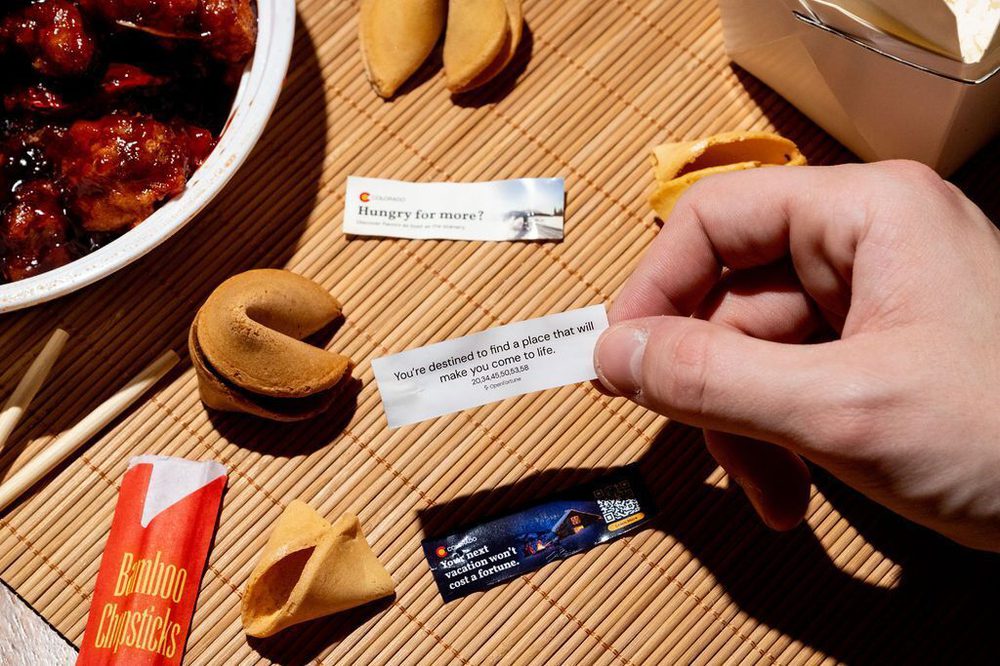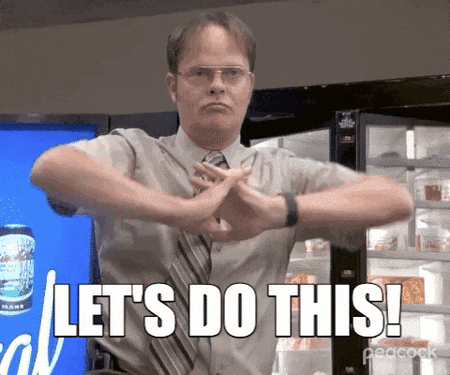If Zebra Pens’ 3D-rendered, yoga-pose striking animal mascot is any indication, the company isn’t afraid to do things a little different.
Renowned for adding style and intentionality to the simple act of writing, Zebra Pen doesn’t just sell ink. It wants to be a part of moments of expression.
So when Ken Newman, VP of Marketing, first met the OpenFortune team, the idea of slipping creative ads into cookies did more than just intrigue him. It created him an ‘aha’ match made to be written about.
Ken sat down to detail how fortune cookie advertising struck the perfect chord for Zebra Pen’s zig-while-others-zag brand philosophy – and why this quirky, attention-capturing, clever new tactic is helping a globally established brand write a new chapter with U.S. consumers.
First Impressions: A Business Speed Date Worth Swiping Right On
brands “speed date” with media and marketing vendors.
He looks forward to rubbing elbows with potential partners and hearing their fresh takes. "If I don’t know about an opportunity or a service someone provides, how can I take advantage of it?"
After just a 20-minute slot chatting with OpenFortune President, Carlo Palomino, the (marketing) sparks were flying. And like any great first date, Ken left wanting more.
After a follow-up call with Carlo, it became clear: This was more than just a novel idea. It was a true ideological fit.
Fortune cookies checked all the right boxes. They’re unexpected. They’re inherently shareable. And they’re exactly the kind of playful, out-of-left-field tactic that captures Zebra Pen’s zig-over-zag ethos – plus offered a creative play to connect with new consumer demographics.
“If you think about writing, us being able to engage with a younger and younger audience – I’m talking nine or ten years old – with that whole concept of opening up a fortune cookie? It led me to believe I’m onto something here.”
Zigging Into the U.S. Market
While Zebra Pen is already a household name in Japan and across Asia, the brand has set its sights on expanding a footprint in the American market.
So when OpenFortune presented a way to reach American consumers in a moment of delight and surprise, Ken knew he was onto something.
"It’s exactly what we were hoping for – people opening the fortune, not expecting to see information about a pen. They’re going, ‘You know what, I really haven’t thought about writing something down and I didn’t really think I needed Zebra Pen, but yes I do.’ That’s the unique zigging we want to accomplish with what we’ve got done with OpenFortune."
Zebra Pen has already used fortune cookies at multiple events and sponsorship activations. One recent standout moment included a Willy Wonka-inspired golden ticket giveaway hidden inside branded cookies where winners took home a stuffed Zebra Pen swag bag.
"You’d be thinking I was giving away gold! The fun-ness of the fortune cookie was really inspiring to watch."
Cracking Open Organic Social Shares, Genuine Pen Buzz
As a seasoned marketer with decades of skin in the game, Ken’s seen plenty of marketing trends come and go. But fortune cookies? That was different.
"Marketing is about trying, right? Especially in today’s environment where the market isn’t growing in a general sense. Everybody’s trying to figure out how do I capture somebody’s attention.
We’re all kind of doing the same things. We’re all using social media. We’re all using TikTok. We’re all using influencers. We’re doing all that stuff – and it’s all traditional great marketing – if you do it correctly it’s really, really good. But we’re all doing it."
OpenFortune offered Zebra Pen a chance to break from the pack. And its roster of big-name clients brought social proof helping seal the deal.
"I’m no dummy. If some of the other bigger partners OpenFortune is working with see value in it, I think I should give it a shot."
Ken stressed how Zebra Pen doesn’t just want to be part of the conversation, or one name in consumers’ wider rotation of writing products or office supplies. They want to own that space.
"If you're first and establish a relationship with a consumer, as a first, as an original, there’s staying power…you get credit for being first."
Now, the brand is using OpenFortune to drive organic engagement, spark unexpected moments of delight, and create buzz in social spaces. The goal? Real people sharing real experiences – one tiny piece of paper (and pen brand) at a time.
Emotionality Inked Into Every Fortune
From a marketing standpoint, Ken understands Zebra Pen ads can’t rely on product quality alone. Campaigns need emotional resonance to carry the message home.
OpenFortune’s cookies help them spark a genuine moment of connection or inspiration with customers – especially in a digital-first, not pen-and-paper first, culture.
“The idea that somebody was inspired to think about how they hadn’t put pen to paper – and saw the value in doing that – and were inspired to go back to pen to paper? That’s terrific."
Because it’s not about the pen. It’s about when do I use the pen? How do I use the pen? OpenFortune allows us to inspire people to think about that."
Ken also admits his main competitors might have much bigger wallets on their side. Yet their ads so often lack the smarts and the heart to truly stand out. All that money and they still end up drowning in sameness.
Great Energy. Great People. Great Partnership
Ken lights up when working with people who bring real vision to the table.
“[The] Process is fantastic. I think the biggest compliment I could give is the energy and excitement and enthusiasm from every [OpenFortune] staff member I’ve encountered is infectious…that’s not always the case."
For him, that energy is as much personal as it is professional.
“I have a lot of passion for what I do. I really love what I do. As a result of that, when I engage other people who are equally or more passionate about what they do, when that energy is there, it makes me want to have more meetings with them…it makes you feel good."
Given just how perfect the pairing between the brands, it comes as no real surprise Ken has OpenFortune inked into Zebra Pen’s long-term ad strategy already via a multi-year partnership. That decision, for him, was as much about the simpatico relationship as it was his broader marketing leadership style.
“You can’t do anything effectively in one year. If I’m in a space for one year and gone the next, what’s the value in that? You’re forgotten. So our mantra when we look at partnerships is it’s gotta be at least a minimum of three years."
This kind of long-term thinking allows Ken and his team to strategically roll out campaigns market by market, letting awareness blossom slowly and meaningfully. “You have more likelihood of success if it’s a multi-year campaign than one.”
Writing the Next Zebra Pen Chapter, One Cookie at a Time
Ken makes sure Zebra Pen runs thorough consumer usage and awareness studies to get a feel for how consumers perceive the brand.
One word that always comes up? Fun. And OpenFortune doesn’t just align with that existing spirit of fun and delight – it amplifies it.
"OpenFortune is a great platform, especially if you’re an up-and-coming brand or a mid-brand in a very competitive space where you’re all doing the same thing. OpenFortune is not that. It’s not the same thing."
People don’t just crack open the cookie and forget. They take photos. They share them online and in real life. They laugh. They tag Zebra Pen. They remember.
In a time when audiences crave deeper meaning, that kind of interaction matters more than ever. To Ken, emotional resonance is the most valuable investment any marketing will make.
"They’re looking for experiences. Micro-events. Opening a fortune and sharing it, being engaged with a brand, it’s almost like a micro-event…it’s a personal interaction between you and the brand."
When asked for final reflections on what working with OpenFortune has meant to the Zebra Pen team, Ken kept it short and sweet.
"My only wish is I had larger pockets to do larger distribution."
The good news is, he’s already got the perfect pen to start writing out that manifestation. Plus a fortune cookie or two to go with it.









